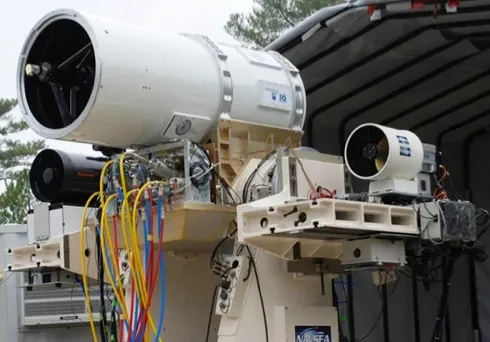This May sees the release of Star Trek Into Darkness. Directed by J. J. Abrams, trailers for this twelfth Star Trek film have been getting Trekkies very excited indeed...
To celebrate the film’s release, we look at some of the Star Trek technologies that have come true.
1
Medical tricorder

Dr McCoy’s medical tricorder might have seemed many centuries ahead of our own humble stethoscope back in the 1960s, but it’s now a very real possibility. The portable (and cheap) Scanadu Scout, due out this year, can gather information about your pulse, temperature, heart rate, blood oxygenation and more just by placing it against your forehead. Plus it’s small and simple enough for anybody to use, not just trained medical professionals. So if this doesn’t qualify as a real medical tricorder we don’t know what will.
2
Tractor beams
Being able to trap enemy spaceships in a beam of light is understandably handy when travelling through space. Whilst we can’t trap whole ships yet, scientists in the Czech Republic and the UK have developed a tractor beam that can attract microscopic particles. The beam has potential medical implications, with possible uses including the ability to select white blood cells and build nanoscale structures. But it can’t catch passing spaceships (yet). Sorry folks.
3
Laser weapons

From hand-held guns to shipboard cannons, the Star Trek universe had every laser weapon imaginable, and now the US military is following suit. In April 2013, the US Navy ran successful tests on its new Laser Weapon System (LaWS), which can shoot down drones from the sky. Once built it costs just $1 USD to fire each time, making it one of the most cost-effective weapon systems on record. It’s set to be deployed on a US transport ship in the Persian Gulf next year.
4
Transportation
Whilst we may not be able to “Beam me up Scotty!” just yet, scientists are making leaps in being able to ‘teleport’ information. A team of scientists at the University of Copenhagen has been developing a way to sustain a process known as entanglement. This is useful as two entangled particles share a ghostlike connection, even when they’re on opposite sides of the Universe, meaning that if one particle is read the other particle will instantly ‘know’. Being able to exploit this connection will allow us to send secure, non-decodable messages at superfast speeds.
5
Telepresence
In Star Trek, those with the gift of telepathy could use a telepresence unit to remotely operate entire spaceships from a safe distance. Today we use technology to navigate unmanned space vehicles (like the Mars Curiosity rover) remotely, albeit it by computers rather than telepathy.
But the possibility of controlling a spaceship with your mind is not as far-fetched as you might think. Researchers at Harvard have developed a brain-to-brain interface that allows a human to remotely move a rat’s tail using just their mind. So being able to control spaceships with our thoughts may be just around the corner.
Follow Science Focus onTwitter,Facebook, Instagramand Flipboard